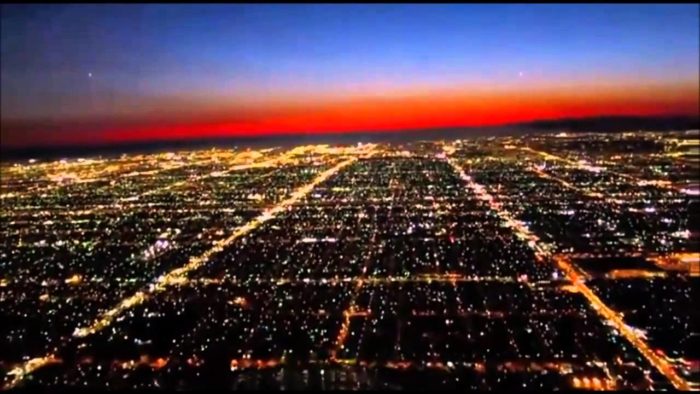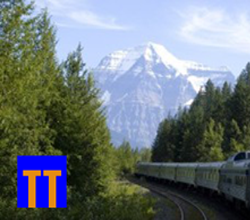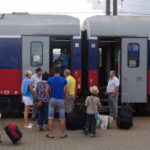Public Transit vs. Urban Sprawl.
The flight to Los Angeles from Hawaii is pretty much the same every time. About four-and-a-half hours after leaving Maui, you can first spot the lights of the mainland up ahead. Just before making landfall, the plane begins a long gentle right turn to the south, continuing an almost imperceptible descent over the city for another ten-to-fifteen minutes or so. Then there’s a final right turn and we land into the wind, heading west.

It’s a spectacular approach because from four of five thousand feet, all you can see is city–to the north and to the south, for miles and miles. It extends to the east, too, but just short of the horizon, it reaches the mountains. That’s where the city lights finally end.
On one of my flights a few years back, during a daytime landing, I realized I’d spent at least fifteen minutes flying over hundreds of thousands of single-family houses–some upscale; most not. But as far as I could see see, spread out below me was what the city planners refer to as urban sprawl.
Our fixation on the “American Dream”–more specifically, the part about the single-family home in the suburbs–is what created urban sprawl and traffic jams. To get people from those suburban homes to their work in the cities, we built highways. With developers relentlessly providing more and more new homes in new subdivisions, commuter traffic became unbearable. So we built more roads, wider roads and, eventually freeways. But when the new roads opened and commuter traffic eased, more developments were built and within just a few years, all the new roads were clogged.
Highway construction in an urban area can cost billions. Before construction even starts, expensive land must be bought up for the right-of-way, land that will never again generate real property tax revenue. Transit also comes with an expensive price tag, which is why supporters try to justify the cost by over-promising the benefits.
The truth is, transit will not “solve” the problem of traffic congestion. What it does do, is maintain rush hour traffic at an acceptable level. As the population increases and more people move to the suburbs, traffic becomes unbearable. When more people turn to transit, rush hour traffic returns once again to the bearable level.
Here’s the point … and this is why public transportation is a better deal for taxpayers over the long haul: With no transit, you have to add more lanes; with transit, you just add more trains.
Eventually, politicians have to suck it up and fix mistakes made by someone else, even when it costs a lot of money. Honolulu has learned that the hard way. A transit system for Oahu was first proposed in the mid-1970s when the federal government was prepared to fund 90% of the cost. The plan was voted down by the Honolulu City Council … by one vote.
After 40 years or arguing, Honolulu’s system is finally being built. It’s costing billions, but it will be successful. Because when the traffic becomes unbearable again . . . they’ll just add more trains.




Well, urban sprawl started with the arrival of the many trolley systems, then, the first suburbs saw the light. But you’re right that at least those first suburbs were still quite dense, making transit more viable, in the beginning even profitable, with little to no competition from private cars. The suburbs built in the last 50 odd years, often cul-de-sac, have been almost exclusively car-oriented, with transit being expensive to organise because they block through-traffic, and or your bus has to make expensive and slow detours, or people have to walk quite a distance to the nearest bus stop. Without a change in urban planning, a lot of suburbs will struggle, and even worse, after decades of decay in the inner city, it’s not unlikely those once favoured suburbs become home to the poor, leaving them with little transit options, because they can’t afford well located neighbourhoods anymore…